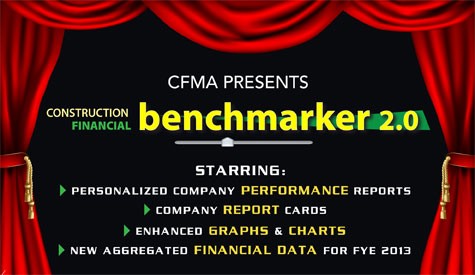Benchmarking Financial Ratios to Performance MA Accounting
Post on: 16 Март, 2015 No Comment

Benchmarking financial performance with ratios
Target Audience: Manufacturing and Distributing Companies, M&D Industry, Chief Financial Officers, Financial Benchmarkers, Benchmarking Ratios Interest
When it comes to finding the source of a problem or better yet, the source of a success simply looking at the big picture isnt always the most effective approach.
Benchmarking with financial ratios allows manufacturers to break their operations into individual segments to measure effectiveness against past performance, company goals and industry standards. Benchmarking can provide insight into which areas of your business are strong and which need improvement.
Different ratios for different needs
Financial ratios are calculated by comparing two or more items on your balance sheet or income statement. While this can be done in a variety of ways, some ratios are used more often than others.
For example, the debt-to-assets ratio is calculated by dividing your total debt by total assets. The more debt you have, the higher the ratio will be. Because banks will likely take this ratio into consideration when you apply for a business loan, strive for a ratio of 1-to-2, or 50%, to be considered a reliable applicant with manageable debt. (See the sidebar Using financial ratios when securing a loan.)
The return-on-assets ratio shows the profit generated by total assets employed. This is calculated by dividing net income by total assets. The higher the ratio, the better, because it shows youre earning more money on less investment. The return-on-equity ratio (net earnings divided by total net worth) shows the profit generated by net assets employed and reflects owners return on investment. Additional ratios include the:
- Current ratio (current assets divided by current liabilities) a current ratio of 2-to-1 is ideal,
- Quick ratio (current assets minus inventory, then divided by current liabilities) a quick ratio of 1-to-1 or better is usually satisfactory, and
- Sales to inventory ratio (annual sales divided by inventory) this should hover around 6-to-1, meaning youll need to order new inventory about six times a year.
Another useful ratio, the times interest earned ratio, is calculated by dividing net earnings before interest and tax by your interest expense. This reflects your companys ability to meet interest expenses from operations.
You vs. the competition
In addition to measuring the progress of your business over a certain period and unearthing trends and problems, benchmarking can provide a more tangible view of where your manufacturing company stands in relation to your competitors. Trade associations such as the National Association of Manufacturers provide up-to-date financial figures, including industry averages for rent, utilities, materials costs and employee compensation. Trade journals, as well as the U.S. Department of Labor, can also be helpful sources for relevant financial statistics.
To find the applicable industry statistics, youll need to know your specific industry segments North American Industry Classification System (NAICS) code, which recently replaced the Standard Industrial Classification system. You can find your NAICS code by visiting www.census.gov/epcd/www/naics.html.
The good and bad of benchmarking
As with all means of analyzing your companys financial standing, benchmarking with financial ratios comes with its own set of benefits and pitfalls. In measuring your financial strength by comparing it to past company performance and industry averages, your management team will gain insight into which goals the company has achieved and where its fallen short, with tangible ratios for reference. And it will allow you to examine financial operations on a magnified scale, bringing to light any small problems that could affect your companys overall financial well-being.
On the flip side, calculating and evaluating these ratios can be time consuming. Also, if a number is recorded incorrectly, a ratio is miscalculated or a statistic is out of date, the process could yield misleading information. By working with your financial advisor to calculate and analyze your companys financial ratios on a regular basis, youll be more likely to start and end with the right numbers and be successful in your benchmarking efforts.
Where youve been, where youre going
Knowing where your manufacturing business stands compared to years past, company goals and industry averages is vital when it comes to understanding the strengths and weaknesses of the company youve worked so hard to grow. Calculated correctly, financial ratios could be the key to turning where you are into where you want to be.
Sidebar: Using financial ratios when securing a loan
Your manufacturing businesss financial ratios are among the myriad pieces of data a lending institution will evaluate when deciding whether your company is worthy of a loan and will be dependable when it comes to paying it back.
Especially if youre a first-time borrower, your banker will examine a number of financial benchmarks, including profitability ratios, such as your return on assets; activity ratios, including total assets divided by net sales; liquidity ratios, such as sales divided by working capital; and leverage ratios, such as total liabilities over net worth. The bank will compare these ratios against a baseline or current industry averages.
By regularly evaluating these ratios, youll have an idea of your companys financial standing before you apply for a loan, which will help you foresee your borrowing limits and set goals for securing more funding.
Find out how our M&D accountants can add value to your business. Email us or call us at 1 (888) 875-9770 .














